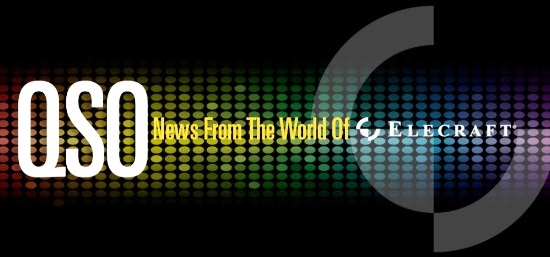
TAGS: Signals Wild Signals Caged; QSO Today Virtual HAM EXPO 2021 – Prize Winners Announced;QSO Ham Expo 2021 Prize Winner;K3S Options News;Elecraft Employment Opportunities
K4 Update – New YouTube Video
DARC reports 35 Electrical Noise Area Monitoring Systems (ENAMS) have been delivered and another 20 locations are sought as part of the effort to monitor the interference from human-made noise on the HF bands
ENAMS is based on nationwide installed measuring stations that work as a network. With their help, the DARC can make scientifically reliable statements about interference levels on the frequencies. As is well known, the interference has increased in recent years, as various consumer devices drive up the noise level.
The ENAMS project was funded by the DARC Membership Pro in 2018.
Extract off GB2RS (29th November)
Episode 27 TX Factor will soon be available.
In this latest episode the RSGB’s General Manager Steve Thomas, M1ACB explains how the Society’s positive response to the spring and summer lockdown helped to boost awareness of amateur radio in the UK.Steve stresses the importance of the ongoing work needed to maintain the impetus.
Bob, G0FGX and Mike, G1IAR get to grips with using an RF Shark openSPOT Hostspot for some mobile DMR action.
Bob visits Don Field, G3XTT at his new QTH near Wells to see how the editor of Practical Wireless created some simple antennas to swiftly resume his on-air activities. TX Factor episode 27 is proudly sponsored by the Radio Society of Great Britain and can be viewed at www.txfactor.co.uk.

Multiple Balloons Carrying Ham Radio Payloads Launched ………More
Eleven schools across the US launched helium-filled balloons carrying amateur radio payloads on October 9. The Smithsonian Air and Space Museum live-streamed the multiple launches. The balloons are trackable via ham radio on APRS (either 144.39 MHz FM or 144.34 MHz FM)…………..

By Colin Butler of https://www.icqpodcast.com/
Phil Karn KA9Q, Randy Standke KQ6RS and students at the Mount Carmel High School Amateur Radio Club have constructed and deployed an amateur radio marine buoy, callsign KQ6RS, transmitting 14.0956 MHz USB WSPR. About 700 km off the coast of southern California, the buoy is transmitting WSPR on 20m using the callsign KQ6RS and is being received all over the US and into Canada and Brazil.
The electronics is the 20m WSPR version of the WB8ELK “pico tracker” that has been flown quite a few times (including by us) on long-duration balloons. We removed the solar panels and substituted 21 ordinary alkaline D-cells wired to supply 4.5V. We estimate the battery lifetime will be 6 months.
The basic design was inspired by Bob, WB4APR, at the US Naval Academy. Physically, the buoy is just a 5′ section of 4″ PVC pipe, ballasted at one end to float vertically in the water. The top is closed by a sewer pressure test plug I found at Home Depot; it has a bolt in the centre that acts as a convenient feed-through and mounting point for the antenna, a stainless steel CB whip with a matching network designed, tested and carefully tuned by Randy. We use the sea as a counterpoise, but to avoid direct metal/seawater contact we lined the inside of the pipe with copper tape to form a capacitive connection. We probably spent too much time on this; Randy even modelled the electrical fields in the seawater with a professional RF analysis package.
Checkout the Bouy’s Latest – HERE .
© 2019-2023 WoSARS.Club